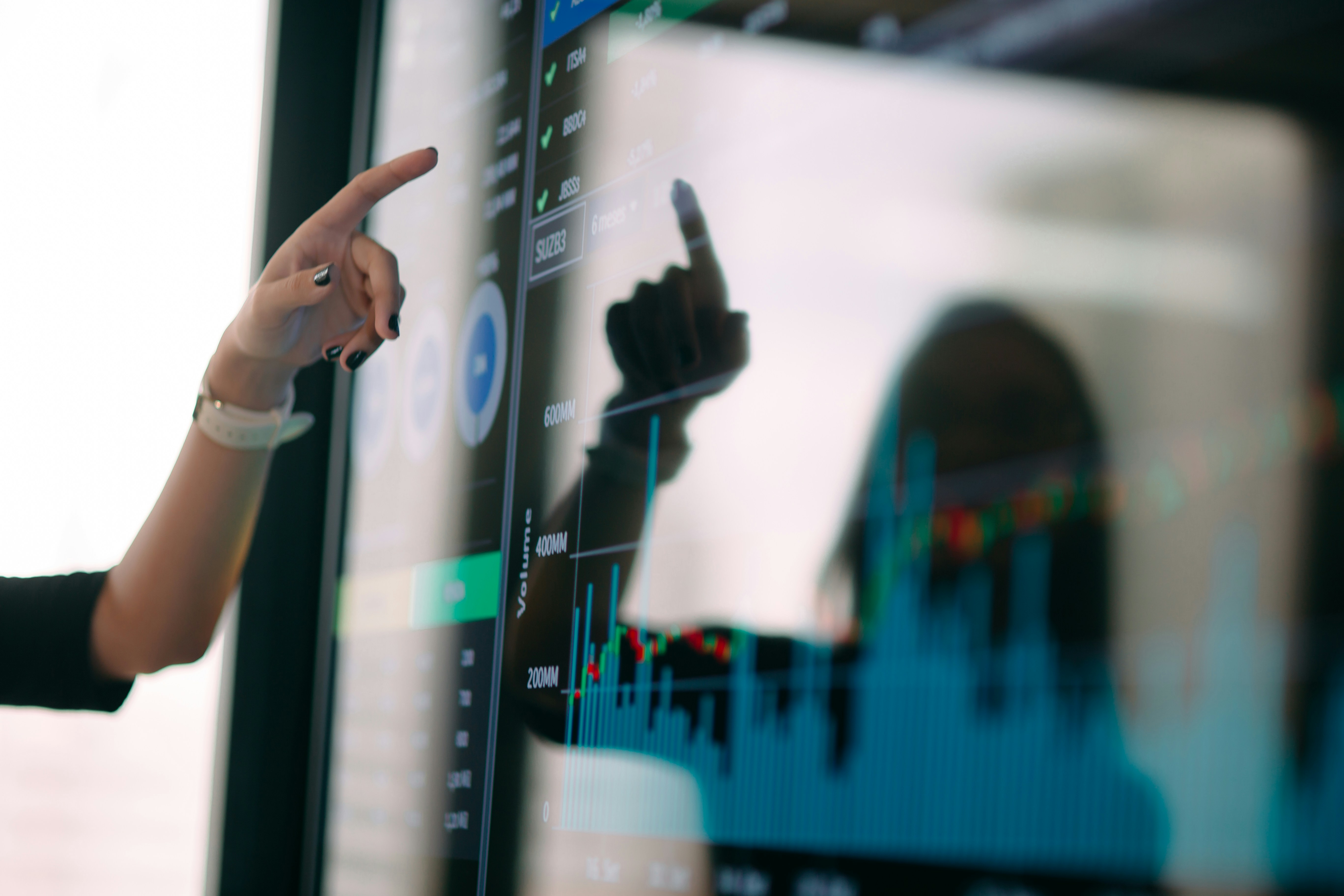14 novembre 2025
Artificial Intelligence in Italy in 2025: Trends and Applications
Discover how AI is transforming Italian companies across innovation, regulation and the productive sector
In 2025, artificial intelligence continues to concretely and measurably transform Italian companies, operating within an increasingly defined and articulated European regulatory context that guides its responsible and sustainable adoption.
An in-depth survey conducted by the Artificial Intelligence Sounding Board of Confindustria, described in the report “Artificial Intelligence for the Italian System”, collected 241 use cases from 76 Italian companies, focusing on strategic sectors for the country. The application of AI goes beyond the latest generative innovation (which represents 18.3% of cases), embracing multiple forms adapted to specific industrial and functional needs.
ISTAT data indicates that in 2024, 8.2% of Italian companies with at least ten employees adopted AI technologies, marking an improvement but remaining below the EU average of 13.5%. Important challenges remain, such as implementation costs and skills shortages, which require concrete efforts to be overcome.
Sectoral mapping of use cases
The analysis highlighted how Italian companies are customizing AI models to meet the specificities of their productive sectors.
-
Health and life sciences AI drives healthcare digital transformation by improving both quality of care and operational efficiency. Among the most established applications is the automation of clinical documentation, which leverages speech-to-text recognition technologies and natural language models to transcribe medical reports in real-time during visits, thus reducing bureaucracy. Another area of great importance is diagnostic imaging which allows analysis of X-rays, CT scans and MRIs, helping to detect potential anomalies and speeding up the diagnostic process. Also growing strongly is personalized medicine, which uses large clinical and genomic datasets to develop prevention strategies and therapeutic treatments tailored to individual patient specificities.
-
Manufacturing In this sector, AI is crucial for enhancing predictive maintenance, which reduces failures, minimizes downtime and increases safety within production facilities. Another application concerns digital twins which allow creation of virtual replicas of plants, production lines and machinery. This enables real-time monitoring and simulation of performance, providing a complete picture to optimize energy consumption, schedule maintenance with precision and improve overall productivity. In parallel, advanced computer vision systems automate quality control and management of the entire logistics cycle, detecting hidden defects or irregularities and optimizing flows of people, vehicles and goods. Additionally, predictive analysis of production costs supports strategic and commercial planning.
-
Sustainable mobility In the mobility sector, artificial intelligence improves operational efficiency, reduces emissions and optimizes costs in public and private transportation. Among the most relevant applications are digital twins, which monitor infrastructure status in real-time and regulate energy consumption, and predictive maintenance, which anticipates failures and limits downtime. Advanced algorithms optimize logistics routes, reducing kilometers traveled, consumption and emissions, and allow customer management with personalized strategies. For infrastructure monitoring, technologies such as LiDAR, computer vision and IoT sensors are used, which collect high-resolution data to intervene promptly on roads, bridges and other structures. Numerous international cases demonstrate how these solutions promote more sustainable urban mobility, combining energy savings, emission reduction and greater safety for users.
-
Public administration In this area, managerial efficiency grows thanks to sensors and integrated data that support infrastructure such as public lighting and urban greenery, planning predictive interventions and optimizing resources. AI also supports waste management and monitoring of large natural areas, accelerating responses in emergency situations and ensuring greater safety and sustainability.
-
Tourism The use of AI is also expanding in the tourism sector, where it is exploited for dynamic pricing optimization and tourist flow analysis to reduce overcrowding and improve visitor experience. Advanced chatbots assist customers 24/7 with natural and personalized dialogues, while generative AI tools facilitate itinerary creation and booking management. Analysis of geolocated data and feedback allows adaptation and optimization of the territory’s tourism offer.
Cross-functional applications by business function
Within the Confindustria survey, in addition to sectoral differentiation, numerous use cases concern business functions common to many companies, with relevant results:
-
Human resources and administration: AI creates multidimensional “competency maps” and performance tracking, automates personnel selection with more objective evaluations and supports upskilling and reskilling, anticipating labor market changes. In administration, AI accelerates document management and back-office operations, classifying communications, automating responses and providing virtual assistants to support employees in daily activities, creating more efficient and collaborative work environments.
-
Research and development: artificial intelligence accelerates research, from pharmaceutical design to molecular simulation, allowing study of complex biological networks and personalization of treatments. Digital twins and AI copilot systems improve operational efficiency by reducing downtime.
-
Sales and marketing: technological solutions improve customer understanding through analysis of large amounts of data, including images and social media, and allow prediction of sales and emerging trends. Assisted copywriting tools and personalization techniques across various channels generate significant savings in terms of content production time and costs, while maintaining high quality standards.
-
Finance and procurement: intelligent systems optimize credit risk and solvency, as well as predict demand for raw materials and react to market offers. Intelligent automation reduces errors and costs, improving planning and regulatory compliance.
-
Quality control: thanks to sophisticated computer vision systems, defects are identified with precision and speed superior to traditional methods, allowing reduction of waste and improvement of final product quality. Applications range from pharmaceuticals to semiconductors.
-
Cybersecurity: adopted technologies anticipate and counter cyber threats by analyzing large volumes of data, automating routine activities and supporting security teams in managing complex scenarios.
-
Sustainability: energy waste is reduced through predictive systems in gas, electricity and water distribution networks. Digital twins and predictive models optimize district heating resources and electrical grids, while NILM (Non Intrusive Load Monitoring) applications monitor domestic consumption. In agriculture, predictive solutions plan irrigation and monitor biodiversity, contributing to more efficient and environmentally friendly farming.
New European framework for AI
The European regulatory context, with the AI Act at the center of an articulated regulatory framework that includes GDPR, the Digital Services Act and other key instruments, is configured as an advanced and dynamic model for technological innovation governance. The regulation distinguishes AI systems based on risk and assigns to the deployer – that is, the company that uses high-risk AI systems – precise responsibilities in terms of risk assessment, personnel training, transparency and continuous surveillance. This approach aims to balance technological development with protection of fundamental rights, ensuring responsible and sustainable AI adoption. Furthermore, the European regulatory impact extends beyond the Union’s borders, positioning EU standards as a global reference for companies and institutions, thus strengthening the competitiveness and reliability of the European digital system.
AI strategies and future prospects
The use of AI systems is expanding and evolving: although generative AI still represents a minority (18.3%), automation projects, predictive analysis and intelligent systems that improve quality and productivity are growing robustly. The most advanced companies adopt complex tools, such as dynamic pricing models and biological network analysis, to increase the value of their offerings. This path requires a clear strategy to maximize return on investment, sensitive organizational developments and governance attentive to risks.
To explore the operational, organizational and governance levers essential for transforming artificial intelligence into a sustainable competitive advantage, we invite you to read our dedicated insight: “AI and ROI: 5 strategic priorities for EMEA companies”. Here we explore strategies for measuring impact, promoting digital culture, managing risks and empowering organizations around AI, themes complementary to those covered in this article.
Read the article on AI and ROISources:
- Confindustria report “Artificial Intelligence for the Italian System” (Primary source, official PDF of the report): https://www.confindustria.it/documenti/lintelligenza-artificiale-per-il-sistema-italia-report-2025/
- Istat, report “Companies and ICT – Year 2024” (Official data on AI adoption in Italian companies, press release and PDF available on the Istat website): https://www.istat.it/comunicato-stampa/imprese-e-ict-anno-2024/
- Regulation (EU) 2024/1689 (“AI Act”) of the European Parliament and Council, official text in Italian published in the Official Journal of the European Union, Series L 12.7.2024 (PDF EUR‑Lex): https://eur-lex.europa.eu/legal-content/IT/TXT/PDF/?uri=OJ:L_202401689

Marta Magnini
Digital Marketing & Communication Assistant at Aidia, graduated in Communication Sciences and passionate about performing arts.

At Aidia, we develop AI-based software solutions, NLP solutions, Big Data Analytics, and Data Science. Innovative solutions to optimize processes and streamline workflows. To learn more, contact us or send an email to info@aidia.it.



